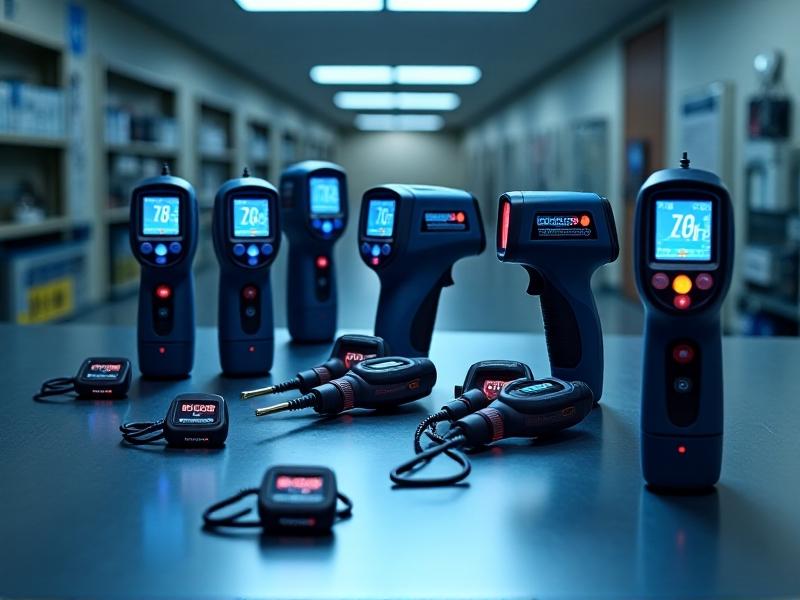Temperature Monitoring in Dry Ice Workspaces
The Importance of Temperature Monitoring in Dry Ice Workspaces
Dry ice, the solid form of carbon dioxide, is widely used in various industries, including food preservation, medical transportation, and scientific research. However, working with dry ice presents unique challenges, particularly when it comes to temperature control. Proper temperature monitoring is crucial to ensure safety, maintain product integrity, and optimize operational efficiency. In this section, we’ll explore why temperature monitoring is essential in dry ice workspaces and the risks associated with inadequate temperature control.

Understanding the Properties of Dry Ice
To effectively monitor temperature in dry ice workspaces, it’s essential to understand the unique properties of dry ice. Unlike regular ice, dry ice sublimates at -78.5°C (-109.3°F), transitioning directly from a solid to a gas. This sublimation process creates extremely low temperatures and releases carbon dioxide gas, which can displace oxygen in confined spaces. Understanding these properties helps in selecting the right temperature monitoring tools and implementing safety measures. This section delves into the science behind dry ice and its implications for workspace management.

Choosing the Right Temperature Monitoring Equipment
Not all temperature monitoring devices are suitable for dry ice workspaces. Standard thermometers may fail to function accurately at such low temperatures, and some materials can become brittle or crack. This section discusses the types of equipment best suited for dry ice environments, including infrared thermometers, digital probes, and data loggers. We’ll also explore the features to look for, such as temperature range, durability, and data recording capabilities, to ensure reliable and accurate monitoring.

Implementing Safety Protocols in Dry Ice Workspaces
Temperature monitoring is just one aspect of ensuring safety in dry ice workspaces. Proper ventilation, personal protective equipment (PPE), and emergency response plans are equally important. This section outlines the safety protocols that should accompany temperature monitoring, including how to handle spills, prevent frostbite, and avoid asphyxiation risks. By integrating temperature monitoring with comprehensive safety measures, workplaces can minimize hazards and protect both employees and products.
Best Practices for Data Logging and Analysis
Accurate temperature monitoring isn’t just about real-time readings; it’s also about tracking and analyzing data over time. This section covers best practices for data logging, including how often to record temperatures, how to store data securely, and how to interpret trends. We’ll also discuss the role of automated systems and software in streamlining data collection and analysis, helping businesses make informed decisions and maintain compliance with industry standards.
Regulatory Compliance and Industry Standards
Many industries that use dry ice are subject to strict regulations regarding temperature control and safety. This section provides an overview of relevant standards, such as those set by OSHA, FDA, and ISO, and explains how temperature monitoring plays a role in compliance. We’ll also discuss the consequences of non-compliance, including fines, product recalls, and reputational damage, emphasizing the importance of adhering to industry guidelines.
Case Studies: Successful Temperature Monitoring in Dry Ice Workspaces
Real-world examples can provide valuable insights into effective temperature monitoring practices. This section presents case studies from industries such as pharmaceuticals, food distribution, and research laboratories, highlighting how they’ve successfully implemented temperature monitoring systems. These stories illustrate the challenges faced, the solutions adopted, and the benefits achieved, offering practical lessons for other businesses.
Future Trends in Temperature Monitoring Technology
As technology advances, so do the tools and methods for temperature monitoring. This section explores emerging trends, such as IoT-enabled sensors, AI-driven analytics, and blockchain for data integrity. We’ll discuss how these innovations are transforming dry ice workspaces, offering greater accuracy, efficiency, and transparency. By staying ahead of these trends, businesses can future-proof their operations and maintain a competitive edge.
Conclusion: The Role of Temperature Monitoring in Ensuring Success
Temperature monitoring is a critical component of managing dry ice workspaces effectively. From ensuring safety and compliance to optimizing operations and leveraging new technologies, it plays a vital role in the success of businesses that rely on dry ice. By understanding the importance of temperature control, investing in the right equipment, and staying informed about industry trends, organizations can create safe, efficient, and sustainable workspaces.








